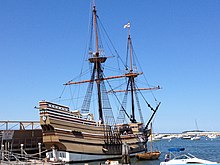Capt. Lemuel Wood, Sr. (1792-1870) Hubby's 3d great uncle
Capt. Wood was a successful mariner based in Fairhaven, Massachusetts, at the major whaling port of New Bedford. He also owned 13 acres of farmland and livestock worth about $9,000 in 1860 (nearly $280,000 in today's dollars), according to that year's Census.
Capt. Wood answered the call for Union service during the Civil War. According to some war records, he was commander of the USS Daylight. (Other pension records call him the "acting master" of the Daylight.) He was already in his 60s, with decades of experience on the water.
The USS Daylight sailed along the coast of Virginia and North Carolina, part of the Union blockade against the Confederacy. After the ship was damaged by Confederate gunfire, she was repaired and reassigned to the James River from October, 1864 to May, 1865, after the war ended.
 |
| Doctor's note attesting to Sarah H. Wood's deadly illness |
Lemuel C. Wood, Jr. (1828-1898) Hubby's 1c3r
The Captain's son and namesake, “Lemuel Junior,” first went into business as a merchant. At the age of 28, he married Sarah Howland Wood, on June 26, 1856. By the time their first child was born in 1857, the birth record recorded Junior’s occupation as “gentleman.” He and Sarah had
At the start of the Civil War, Junior became an acting paymaster for the Union Navy. He resigned that post in June of 1862. On September 22, 1862, he enlisted as a private in Company I, 3d Massachusetts Infantry, and was mustered in the next day. At the time of this enlistment, he said his occupation was “farmer.” On December 3, 1862, Junior was working as a hospital steward at Plymouth, North Carolina, according to his Civil War records.
Trouble hit Junior's family while he was at war in North Carolina. His wife Sarah was fatally ill with consumption. Letters written to her husband’s commanding officers requested that Junior be given a month of furlough to be at her side.
After weeks of letters back and forth, Junior was granted a month's furlough on April 5, 1863. It was just in time: His wife Sarah died on April 14th.
Junior returned to North Carolina after his furlough. His nine-month service with the 3d Massachusetts Infantry ended when he was mustered out on June 26, 1863. Then he joined the 23d Unattached Company Massachusetts Infantry as a sergeant for 100 days. According to the 1890 Veteran’s Schedule, he had dysentery and was “brought home sick.” From April to September of 1865, Junior was an acting assistant paymaster for the Union Navy, stationed aboard the USS Nantucket.
When he first left the service, Junior took a job as a grocery clerk and hired a housekeeper to care for his children. Eventually, he remarried in 1894, to Emma Louise Small Sherman, listing his own occupation as nursing (remember, he was a hospital attendant during the Civil War). Junior died four years later, at the age of 70, in Fairhaven, his birthplace.
--
You know I married my husband for his fascinating ancestors! This week's #52Ancestors blogging prompt is "troublemaker."
























